Diamonds Deal Death to Tumours
This week, how nano-diamonds can help fight cancers, co-operating elephants and tiny digital cameras. We bring you up to speed on the recent earthquake in Japan, and explore the genetic changes that make us who we are!
In this episode
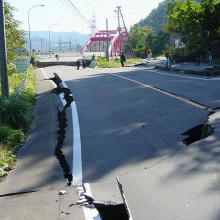
00:29 - Earthquake Update
Earthquake Update
This was a discussion held in the evening on Sunday, 13th March...
Sarah - First of all, just to recap on the situation. On the 11th of March, a massive major earthquake struck off the eastern coast of Japan. It was measured at an 8.9 magnitude and it was a mega thrust earthquake which is the type that you get where you have a subduction zone, where you have one tectonic plate being squeezed underneath another one. It hit about 130 kilometres east of Sendai which is in Honshu, which is the big main island, and the epicentre was in the Japan Trench, which is where you have the Pacific plates subducting under parts of the Eurasian plates. Although the earthquake was actually massive, what caused a lot of the damage was the 10-meter wave tsunami, so it's caused huge amounts of damage in the country.
Chris - A part of the reason why Japan suffers so many quakes is because they're not unusual there, are they? They're getting hundreds a year. It's because it's at the uniting point of three major plates.
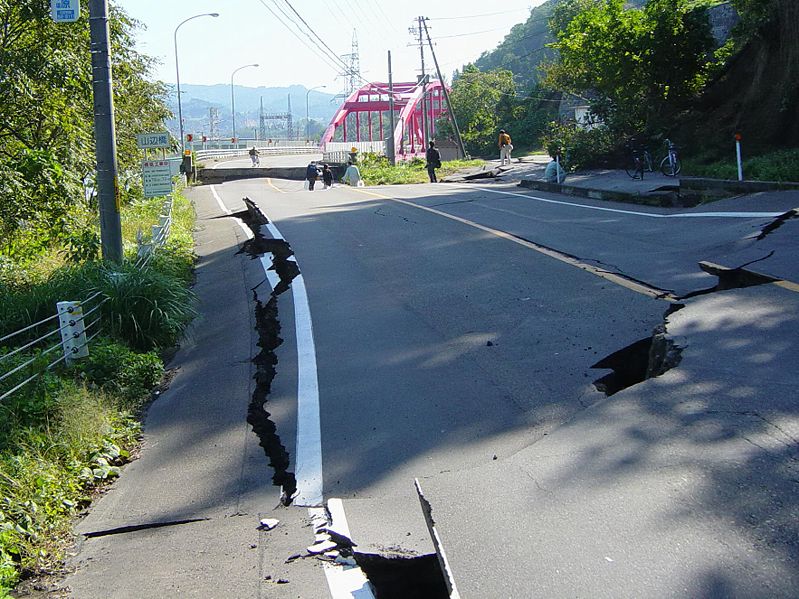 Sarah - Exactly. It's the meeting between the Philippine, the Pacific, and the Eurasian plates. So there's a lot of chances there for various different source of earthquakes. So the ones where you have plates sliding along each other or subducting underneath each other which is what happened in this case.
Sarah - Exactly. It's the meeting between the Philippine, the Pacific, and the Eurasian plates. So there's a lot of chances there for various different source of earthquakes. So the ones where you have plates sliding along each other or subducting underneath each other which is what happened in this case.
Chris - Dave, what's actually going on is you've got huge amounts of material moving or trying to move. It gets to a point where it can't move because you have a plate boundary and therefore, energy is getting stored up, and eventually gives and unleashes all that stored energy from many, many years of movement, but all at once.
Dave - Yeah, that's right. Essentially, it's a huge amount of elastic energy. It was an 8.9 Richter scale earthquake, that's equivalent to 300 million tons of TNT going off all at once. It's an immense amount of energy.
Chris - Is that unprecedented? Have we had one that big before?
Dave - It's certainly in our top 10 earthquakes since we've been measuring them in the last 150 years, so it's a really, really, really serious earthquake.
Chris - Could you talk us through the mechanism of how we ended up with the tsunami. What actually would have provoked that?
Dave - Fundamentally, because you've got one plate being pushed under the other one, so as the strain energy is building up, the plate is getting bent downwards, and effectively, it's pushing up the other plate and all of a sudden, it jumps and the Pacific plate jumps downwards and the Japanese plate jumps upwards. That lifts up billions and billions of tons of water by - I'm not sure what the throw was in the earthquake, but it's probably going to be a few meters. All of a sudden, you've got a huge amount of water, several meters higher that it should be. That creates a great big wave. It then moves in towards the coast. As any wave runs up the coast, it gets higher and higher, and higher. Out in the deep ocean, you don't really notice them, but as they run up the coast, it becomes higher and higher, and higher, and it will cause really big damage.
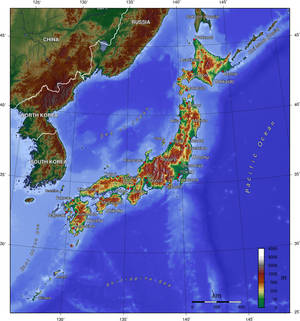 Chris - Is that because you've got lots of waves catching up with each other or is it because the energy would be dissipated across a very deep ocean, but as it gets into shallow water, now you've got the same amount of energy, but in much less water, so you can move that water through a much greater distance to dissipate the same amount of energy?
Chris - Is that because you've got lots of waves catching up with each other or is it because the energy would be dissipated across a very deep ocean, but as it gets into shallow water, now you've got the same amount of energy, but in much less water, so you can move that water through a much greater distance to dissipate the same amount of energy?
Dave - Yes, essentially, it has a huge amount of momentum. When it's in deep water, it converts that into height and so, it gets higher and higher. Also, the really big thing is that it has a very, very long wavelength so you get a huge amount of water rather than a short wave, you've got water rushing up and then rushing down. It's like a tide coming in and out very quickly.
Chris - Which is why it's so devastating. Sarah, what about the nuclear threat? Where are we with that?
Sarah - It's Fukushima Nuclear Power Plant that are having problems at the moment, but I think the key point to make is that a lot of people are probably concerned because you see that today, there were pictures of people being tested for radiation and a small amount of people have tested positive, but I think a lot of people are concerned, could this be another Chernobyl? Could there be a really serious risk to the local population? I think in general, the answer seems to be no, just because of the type of reactor that it is. It's cooled by water. If something like this happens, you have all these control rods that get put down into the nuclear source which absorbs all the neutrons that they're releasing, and helps to stop the energy being produced, but you do still have delayed neutron precursors, and they still keep releasing neutrons for a certain amount of time after this which means you do still get heat building up, so they still need to cool the reactor after it's been shut down.
Chris - And the fact that they're having these problems is that because the cooling isn't working?
Sarah - I think they were having some problem with the water cooling, but I'm not sure what the situation with this.
Dave - I think essentially, they should have pumps pumping water around it which is keeping it cool. The system is designed so that even if the power goes off and the reactor stop producing power, it should have backup generators. I think the big problem they've had is their backup generators have failed which means it stopped pumping water around which means that it's been overheating, and causing all sorts of subsequent problems.
Chris - If the worst case scenario does occur and there is an explosion, how likely is it that there'll be widespread contamination?
Dave - There's already been an explosion high up, but that wasn't a nuclear explosion by any means. It even wouldn't get a nuclear explosion anyway. Hydrogen was being generated and that hydrogen has build up in the top of the building, and they haven't vented it properly, and therefore, the hydrogen just exploded. It's a very, very serious situation, but at the moment, the amount of radiation which is being released is not good, but it's still less than an x-ray, for the people who have been exposed certainly outside the plant itself.
Chris - And also, I think it's worth bearing in mind that Chernobyl was along while ago and the Japanese technology is way in advance of what we have today.
Dave - This is still a '70s reactor which was built in the early '70s.
Sarah - But the key point here is that the moderator isn't made of graphite which is essentially combustible, which is what the problem was in Chernobyl. It set fire because of heat whereas the moderator here is water. Obviously, it's not going to catch fire, so it's less of a problem. And also, these plants are designed - every possible thing that could go wrong, they think of that and think right, "How can we deal with that?" So they are designed to be as safe as possible.
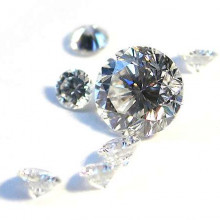
06:20 - Diamonds - girl's best friend, cancer's worst enemy
Diamonds - girl's best friend, cancer's worst enemy
Scientists have added a sparkle to the arsenal of anti-tumour agents by successfully demonstrating that diamonds can augment the cancer-killing properties of some drugs.
Writing in Science Translational Medicine, University of California San Francisco scientist George Chow and his colleagues have demonstrated the effective, safe use in mice of tiny diamond particles dubbed "nanodiamonds". These bodies are octahedral in shape and, at 10 nanometres across, roughly equivalent in size to some small viruses. They are made by firing beams of electrons at diamond dust and can be "functionalised" by washing them in acid, which electrically charges the faces, making them sticky.
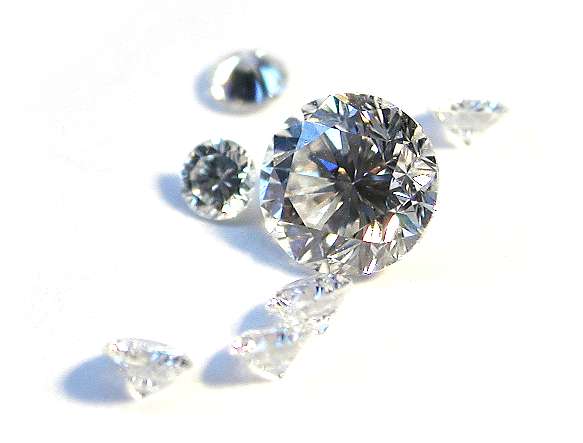 Drug molecules can then be bound to these adhesive facets, permitting the nanodiamond to act as a carrier for the drug molecule. This makes the drug much more difficult for cancer cells to pump out, overcoming the reason why most chemotherapies currently ultimately fail, because tumours turn on efflux pumps that protect the cell from the harmful effects of the drug.
Drug molecules can then be bound to these adhesive facets, permitting the nanodiamond to act as a carrier for the drug molecule. This makes the drug much more difficult for cancer cells to pump out, overcoming the reason why most chemotherapies currently ultimately fail, because tumours turn on efflux pumps that protect the cell from the harmful effects of the drug.
The research team tested their diamond concept by binding the nanodiamonds to the anti-cancer agent doxorubicin, which kills cells by damaging DNA. Cancer cells grown in a culture dish, including cells expressing the kinds of molecular pumps that make tumours chemotherapy-resistant, were killed when the new preparation was administered. Tests also confirmed that the nanodiamond-coupled drug was retained tenfold longer in the cells compared with doxorubicin administered on its own.
The researchers also successfully tested the agents on mice with liver and breast tumours. Injected via a vein in the tail, the nanodiamond preparation gained access to and was retained within the cancerous cells where it led to significant survival enhancements compared with control animals.
Significantly, the nanodiamond formulation also showed lower rates of systemic toxicity, allowing higher overall doses of drugs to be delivered to tumours. However, this proof of principle is only the first step. Now it needs to be shown that diamonds really are a girl's (or boy's) best friend by demonstrating that the technique is equally safe and effective for humans.
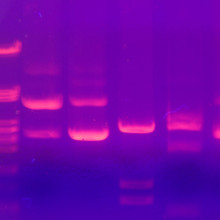
09:39 - The DNA that makes us Human
The DNA that makes us Human
Dr David Kingsley, Stanford University
Chris - Also this week, scientists at Stanford University in California have discovered how certain changes in our DNA have sculpted the evolution of human specific traits and those in particular that set us apart from our closest relatives. Dr. David Kingsley is the co-author on the work which is published this week in the journal Nature. Hello, David.
David - Hello there.
Chris - Thank you for joining us on the Naked Scientists. Could you tell us David, first of all, what was the approach? How did you try to work out genetically, how we have changed in such a way that we can do what we can do, whereas animals like chimpanzees are still hanging around in trees?
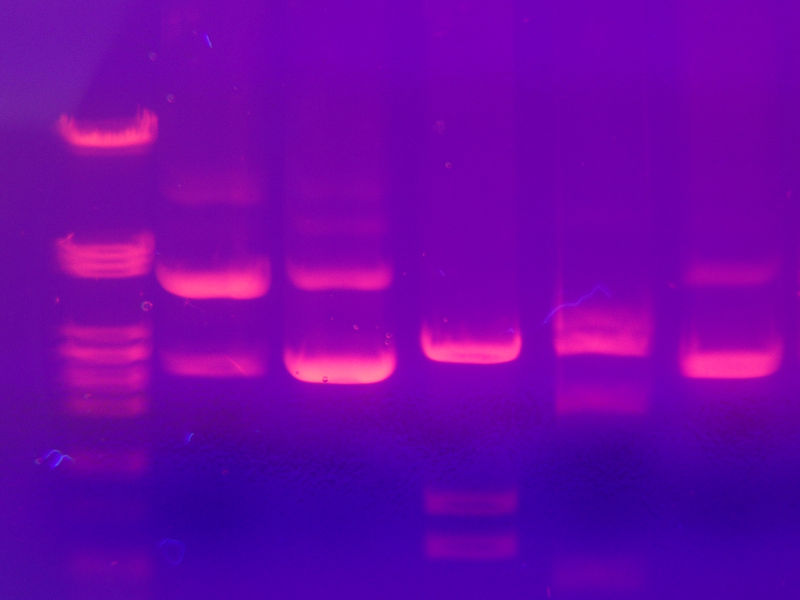 David - One of the big breakthroughs now is that we have the complete genome sequence of both ourselves and many of our closest relatives. So the starting point for this research was to line up all the letters in the human genome with the letters in related organisms, and then look for places where the human sequence was different. That's been done before. People have looked for cases where individual letters had changed in the human sequence. This study took a different approach. We looked for block sub-sequences that were completely missing from the human genome, although present in chimpanzees, and highly conserved across many other organisms. So the fact that they're present in the highly conserved means they're likely to be functional. The fact that they're completely missing from humans suggests that they might contribute to interesting differences in our lineage compared to others.
David - One of the big breakthroughs now is that we have the complete genome sequence of both ourselves and many of our closest relatives. So the starting point for this research was to line up all the letters in the human genome with the letters in related organisms, and then look for places where the human sequence was different. That's been done before. People have looked for cases where individual letters had changed in the human sequence. This study took a different approach. We looked for block sub-sequences that were completely missing from the human genome, although present in chimpanzees, and highly conserved across many other organisms. So the fact that they're present in the highly conserved means they're likely to be functional. The fact that they're completely missing from humans suggests that they might contribute to interesting differences in our lineage compared to others.
Chris - And once you did this analysis, what genes started popping up as important and in other words, present and strongly conserved in the chimps and their relatives, but totally missing from us?
David - We found over 500 locations in the human genome where we were missing information highly conserved in other animals. One interesting feature of that list of 500 locations was that they were almost all places where, rather than changing the products of genes, you would change the regulatory information surrounding the gene. So you would alter how much they're expressed or exactly where those genes turn on, but you wouldn't destroy the product of the gene itself.
Chris - So that's the point because people have gone looking for a lot of differences previously and trying to ask what sets us apart from our closest relatives. In fact, it's not just the genes that are changing. It's the things that turn them on and off.
David - Exactly and we know that exactly that sort of change has a very important role in evolutionary differences in other organisms, so to find that sort of list in the human genome was highly motivating to try to track down the molecular basis of particular human traits.
Chris - What about the really critical ones, the things we're really interested in, things like forebrain expansion? We know that we have a very big pre-frontal cortex - the bit of the brain that does executive function and planning, compared with many of these lower animals. Did you get any insights into how that happened from your work?
David - Yeah. I think that's a great example of a really interesting human trait and it may seem paradoxical to try to explain how brains expanded by looking at a list of sequences that were missing from the human genome. But in order to look for exactly that sort of event, we searched the list for genes whose normal function is to repress or limit how much cells grow. So if you lose information from a gene whose normal function is to limit cell divisions, the loss of that regulatory information may in fact lead to expansion. We found a great example of that in the list. There's a gene called the tumour suppressor gene whose normal function is to limit cell division and sure enough, one of the lesions that had happened in the human genome was to eliminate a switch that normally causes that gene to turn on in a special growth layer of the developing brain.
Chris - Did the research also inform any of the reasons why we get certain things that we'd rather not get? In other words, does it explain why we have certain weaknesses that our close relatives don't have?
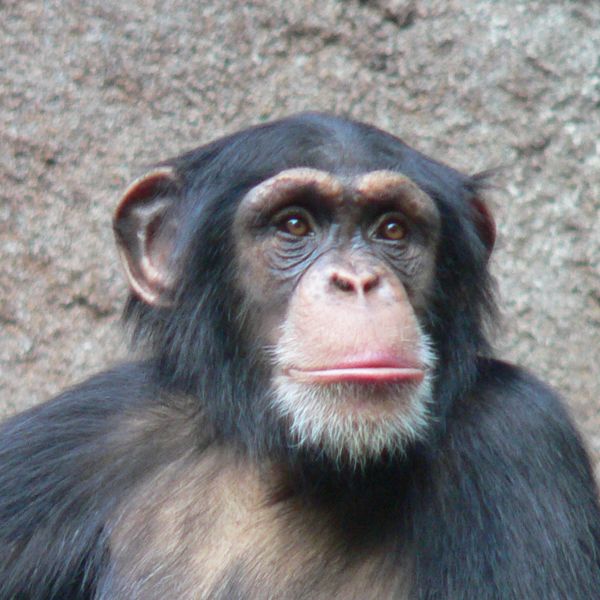 David - Well, the list of molecular losses we think can explain both some gain traits like brain expansion, but also some loss traits in the human genome. We found some molecular switches next to a gene that controls structures that are lost in humans including sensory whiskers. We no longer have those. There's also structures in mini-organisms, mice, chimps, and other animals called penile spines and those are also missing in the human lineage, both controlled by a switch that has been deleted from the human genome.
David - Well, the list of molecular losses we think can explain both some gain traits like brain expansion, but also some loss traits in the human genome. We found some molecular switches next to a gene that controls structures that are lost in humans including sensory whiskers. We no longer have those. There's also structures in mini-organisms, mice, chimps, and other animals called penile spines and those are also missing in the human lineage, both controlled by a switch that has been deleted from the human genome.
Chris - Why don't we have those spines?
David - That's a great question. It's important to remember, this was a "How Study" not a "Why Study" so we know the molecular basis of losing those. The "Why," it might be good to lose those - there's lots of speculation about the potential functions of penile spines in other organisms. They're used to try to remove copulatory plugs that males leave in the female reproductive tracts. So if multiple males are competing for fertilisation, they can be a structure that helps ensure the fertilisation of one male compared to another. They're also sensory. They increase stimulation in males. They may increase stimulation in females, but that could either be a good thing or a bad thing. It could be painful. In fact, some people have speculated that penile spines may inflict a certain amount of tissue damage and make a female less interested in reproduction with another male.
Chris - So by losing them then, we've ended up in a situation where actually it favours us having long term relationships in a monogamous fashion.
David - That's right. So lots of organisms where the penile spines are present, multiple males are competing for a brief period of fertility with a female and the female is only interested for a short amount of time. In humans, female sexual receptivity is extended and we tend to form long term pair bonds, which is a change in social structure within the human lineage that's associated with a whole series of anatomical changes, including the loss of the penile spine.
Chris - David, we have to leave it there. Thank you. It's amazing to think how molecular genetics can then inform how we behave as a society, and how we decide how we're going to have a monogamous partner or not. David Kingsley from Stanford University. You can read the work this week in the journal Nature.

16:09 - Tiny cameras
Tiny cameras
Silicon chips have been getting smaller and smaller over the years, and this has made wiring them up more and more difficult. Most complicated chips are made on a large silicon wafer up to 18 inches across, then cut out of the wafer to produce individual chips. These are mostly wired up by making contacts on the surface and turning them over and putting them onto a connector. This is fine for most purposes but for camera chips this is a big problem, as the light then can't get to the sensors. This means that they have to cut the chips out of the large wafer, then connect wires to the edges which for a small sensor is difficult and fiddley especially for a very small chips and so expensive.
 A group from the IZM Fraunhoffer Institute has come up with a solution to this, rather than connecting to the front of the silicon wafer, they have used a small wafer, effective drilled holes through the wafer to the back, and filled them with conductor creating what is called a via. This means that they can connect the wires onto the back of the wafer before it is cut up. It also means you can stick lenses on the other side.
A group from the IZM Fraunhoffer Institute has come up with a solution to this, rather than connecting to the front of the silicon wafer, they have used a small wafer, effective drilled holes through the wafer to the back, and filled them with conductor creating what is called a via. This means that they can connect the wires onto the back of the wafer before it is cut up. It also means you can stick lenses on the other side.
Then you can just cut up the wafer to produce finished cameras. This has enabled them to make complete cameras that take up a volume of 1mm by 1mm by 1mm, with about 600 000 pixels, and they are made in a way that should be very cheap. They are suggesting using them in endoscopes and as they are so cheap they can be essentially disposable avoiding the difficult problem of disinfecting electronics before putting them in the next patient.
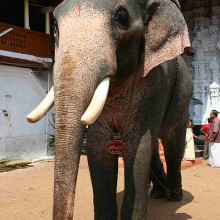
18:04 - Elephants show Cooperation
Elephants show Cooperation
Researchers have shown that elephants are able to cooperate just as well as chimpanzees, to retrieve a tray of food that can't be retrieved by one individual alone.
Elephants live in complex social groups, and are known to show cooperative behaviour like looking after other mothers' young.
As you might imagine, there is a lack of behavioural studies on elephants because they are so large and potentially quite dangerous. This study, which was published in PNAS by Joshua Plotnik and his colleagues, used a group of docile elephants at the Thai Elephant Conservation Centre in Lampang, Thailand.
The researchers modified a cooperation task test that has been in use studying primates since the 1930s. It involves having a tray with food on it, on the ground separated from the pair of elephants being tested by a fence. In order to bring the food into their reach, the elephants had to pull on the two ends of a rope attached to the table. If just one pulled on their end of the rope, it would pull the rope around the table and out of the other's reach. But if they both pulled on the ends of the rope together, the tray would move towards them and they could reach the food.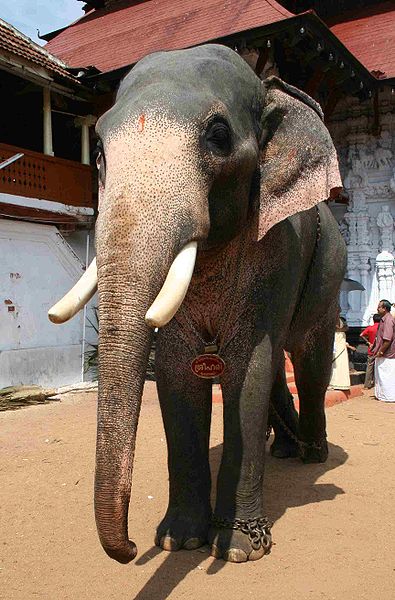
So the experimenters carried out three tests. After training the elephants individually to be able to pull the rope to get the tray, they tested the six pairs for cooperation. After the first test, which showed that when the two elephants were released into their roped off compartments, they would go forward, pull the rope together and get the tray, the question is 'well are they just doing that because we trained them to pull on a rope to get the tray', so they carried out further tests. The first was 'delayed release', where the elephants were released separately, and the first would have to wait for their partner to arrive before they could pull the rope. All the elephants showed a high success rate in learning to wait for their partner. The third scenario was to ensure the elephant was not just using the arrival of the second elephant as a cue to pull their rope, rather than understanding that their cooperation was what would bring the food. Here, one end of the rope was colied up by the tray of food, so there was no way to retrieve the food - if the elephants understood this, then the one with access to their end of the rope shouldn't bother pulling. And this is what happened, showing the elephants really were learning to cooperate to retrieve the reward.
One quite amusing thing they found was that some of the elephants in the group came up with novel ways to retrieve the food. One of them had to actually be excluded from the trial as she learned to stand on her end of the rope, so that when her partner pulled on their end, the tray moved towards them, but she had not had to do any work!










Comments
Add a comment